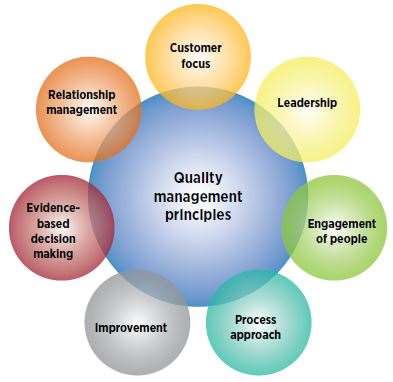What is a Quality Management System (QMS)
Quality Glossary Definition: Quality management system (QMS)
A quality management system (QMS) is defined as a formalized system that documents processes, procedures, and responsibilities for achieving quality policies and objectives. A QMS helps coordinate and direct an organization’s activities to meet customer and regulatory requirements and improve its effectiveness and efficiency on a continuous basis.
ISO 9001:2015, the international standard specifying requirements for quality management systems, is the most prominent approach to quality management systems. While some use the term "QMS" to describe the ISO 9001 standard or the group of documents detailing the QMS, it actually refers to the entirety of the system. The documents only serve to describe the system.
Benefits of Quality Management Systems
Implementing a quality management system affects every aspect of an organization's performance. Benefits of a documented quality management system include:
- Meeting the customer’s requirements, which helps to instill confidence in the organization, in turn leading to more customers, more sales, and more repeat business
- Meeting the organization's requirements, which ensures compliance with regulations and provision of products and services in the most cost- and resource-efficient manner, creating room for expansion, growth, and profit
These benefits offer additional advantages, including:
- Defining, improving, and controlling processes
- Reducing waste
- Preventing mistakes
- Lowering costs
- Facilitating and identifying training opportunities
- Engaging staff
- Setting organization-wide direction
- Communicating a readiness to produce consistent results
ISO 9001:2015 and other QMS standards
ISO 9001:2015 is the most recognized and implemented quality management system standard in the world. ISO 9001:2015 specifies the requirements for a QMS that organizations can use to develop their own programs.
Other standards related to quality management systems include the rest of the ISO 9000 series (including ISO 9000 and ISO 9004), the ISO 14000 series (environmental management systems), ISO 13485 (quality management systems for medical devices), ISO 19011 (auditing management systems), and ISO/TS 16949 (quality management systems for automotive-related products).
Elements and Requirements of a QMS
Each element of a quality management system helps achieve the overall goals of meeting the customers’ and organization’s requirements. Quality management systems should address an organization’s unique needs; however, the elements all systems have in common include:
- The organization’s quality policy and quality objectives
- Quality manual
- Procedures, instructions, and records
- Data management
- Internal processes
- Customer satisfaction from product quality
- Improvement opportunities
- Quality analysis

Establishing and Implementing a QMS
Before establishing a quality management system, your organization must identify and manage various connected, multi-functional processes to help ensure customer satisfaction. The QMS design should be influenced by the organization’s varying objectives, needs, and products and services provided. This structure is based largely on the plan-do-check-act (PDCA) cycle and allows for continuous improvement to both the product and the QMS. The basic steps to implementing a quality management system are as follows:
- Design
- Build
- Deploy
- Control
- Measure
- Review
- Improve
Design and Build
The design and build portions serve to develop the structure of a QMS, its processes, and plans for implementation. Senior management should oversee this portion to ensure the needs of the organization and the needs of its customers are a driving force behind the systems development.
Deploy
Deployment is best served in a granular fashion by breaking each process down into subprocesses and educating staff on documentation, education, training tools, and metrics. Company intranets are increasingly being used to assist in the deployment of quality management systems.
Control and Measure
Control and measurement are two areas of establishing a QMS that are largely accomplished through routine, systematic audits of the quality management system. The specifics vary greatly from organization to organization depending on size, potential risk, and environmental impact.
Review and Improve
Review and improve detail how the results of an audit are handled. The goals are to determine the effectiveness and efficiency of each process toward its objectives, to communicate these findings to the employees, and to develop new best practices and processes based on the data collected during the audit.
